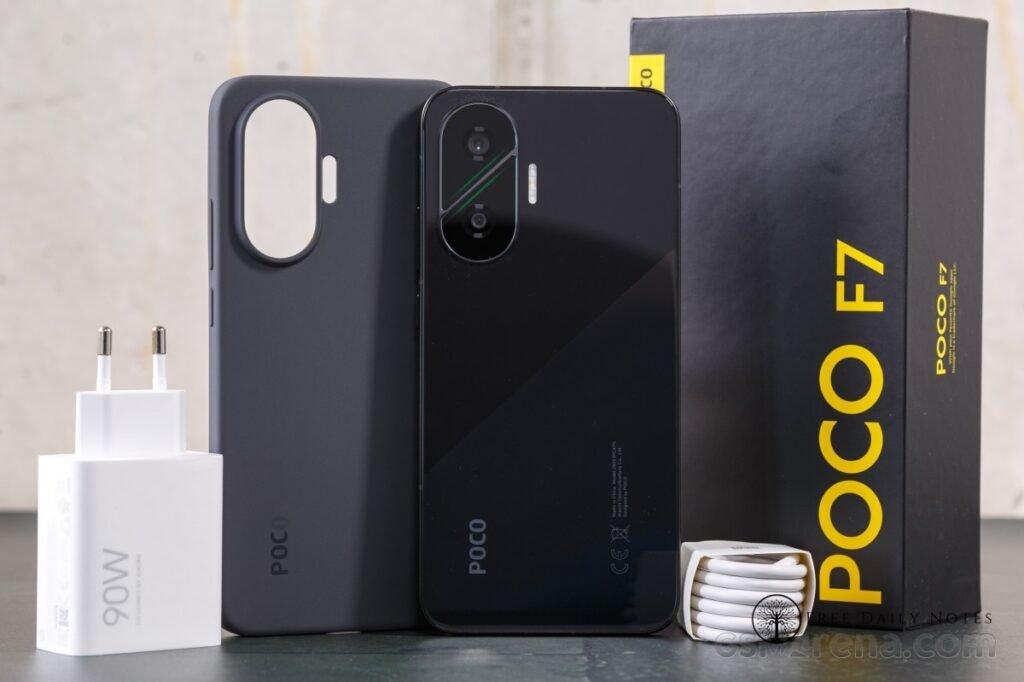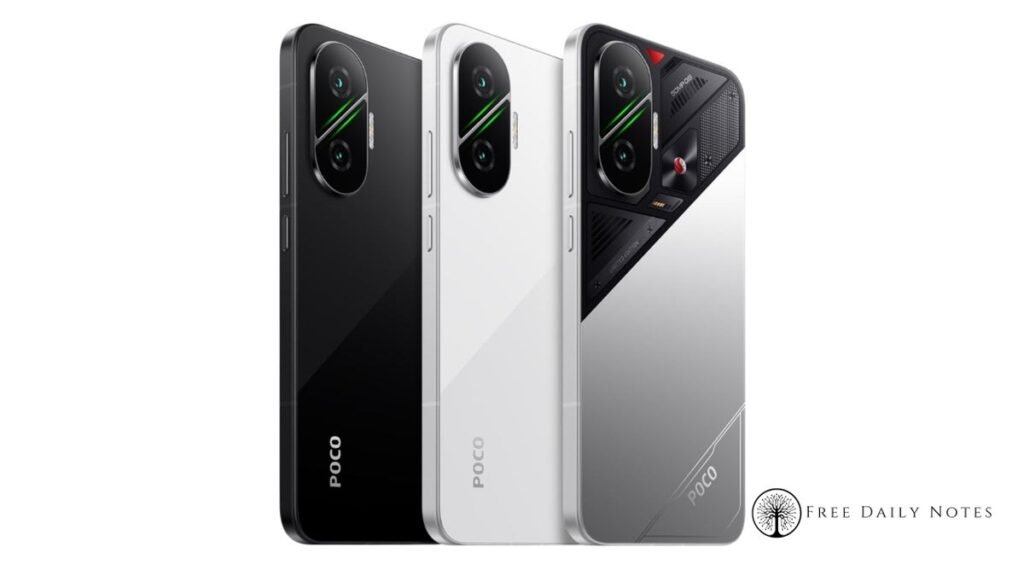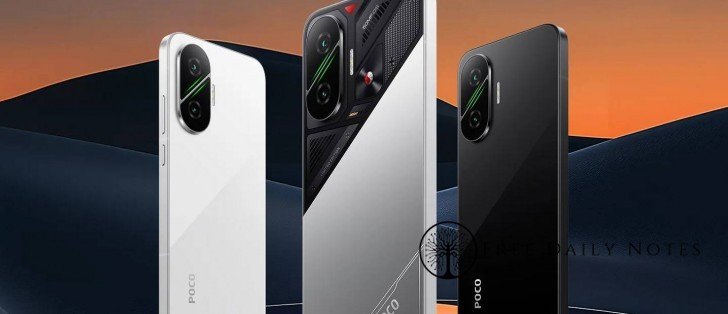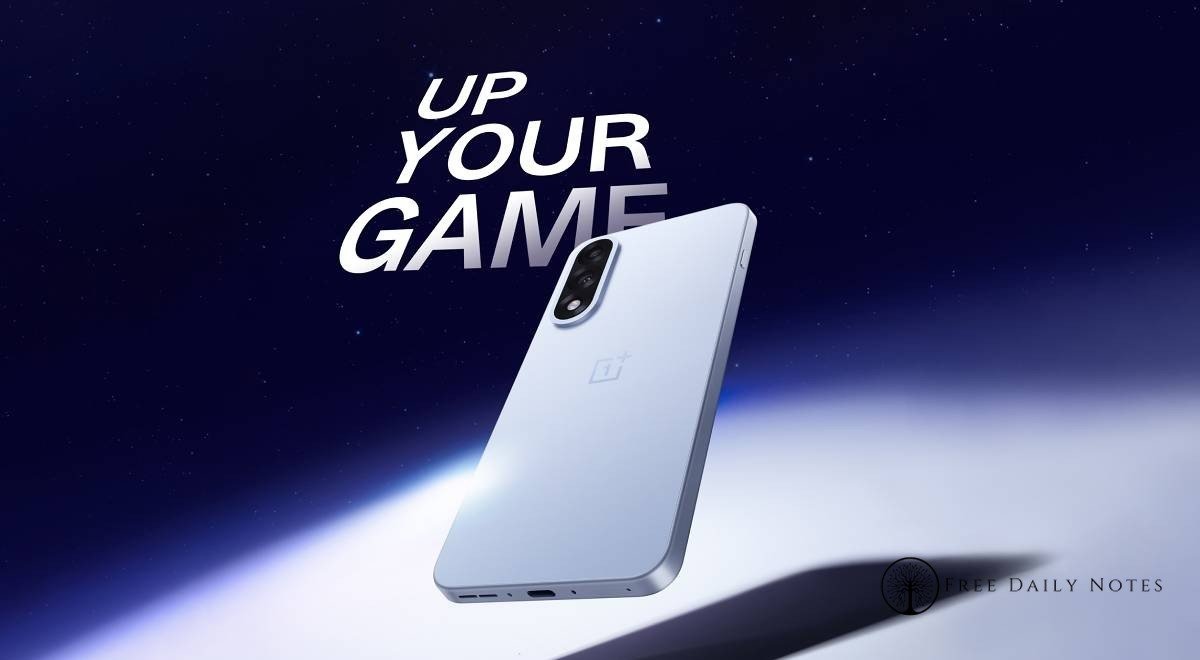
The WhatsApp message from my cousin read: “Thinking of buying the Poco F7, worth it?” I almost choked on my chai. Not another person falling for the marketing hype!
Don’t get me wrong – I’ve been tracking Xiaomi’s sub-brand since they launched the original Poco F1 back in 2018. That phone was legitimately revolutionary for its time. Flagship processor at mid-range price? It genuinely disrupted the market. But things have changed since then, haven’t they? The competition has intensified, prices have crept upward, and distinguishing between genuine innovation and clever marketing has become increasingly difficult.
Which brings us to the Poco F7. Is it actually worth your hard-earned rupees or just another incremental update dressed in flashy marketing? Let’s skip past the PR babble and get real about what this phone actually delivers in day-to-day Indian life.
The Poco F7 Design | Impressive Evolution or More of the Same?
First things first – the Poco F7 does look good. I’ll give them that. But honestly, in 2024, which smartphone doesn’t? We’ve reached a point where even budget phones have decent build quality.
What sets the F7 apart is the matte finish on the back panel. If you’ve ever used a phone in Mumbai’s humidity or Delhi’s summer, you know fingerprint smudges become part of your daily existence. The F7’s treatment of this problem deserves some appreciation. After two weeks of usage without a case (yes, I like to live dangerously), it remained relatively smudge-free.
But here’s where things get interesting. The frame – supposedly “aircraft-grade aluminum” – still feels less premium than what Samsung and Apple offer. That’s not necessarily a criticism; it’s just reality at this price point. There’s always a compromise somewhere.
Weight distribution is something that rarely gets mentioned in reviews, but it’s crucial for everyday usability. The Poco F7 gets this right – it’s balanced in a way that doesn’t strain your pinky finger during extended scrolling sessions. Trust me, if you’re doomscrolling through Instagram reels at 1 AM like the rest of us, this matters.
Color Options That Actually Make Sense
Can we take a moment to appreciate that the Poco F7 comes in colors that normal humans would actually use? No weird purples or gradients that look like a unicorn threw up. Just clean, practical options. The Titan Silver, in particular, has this subtle sheen that changes slightly depending on how light hits it – classy without being flashy.
Wait, I should probably mention the dimensions. It’s neither ultra-compact nor ridiculously oversized. Just right for most hands. Moving on.
Poco F7 Display | Where Your Money Actually Shows

The display is where the Poco F7 starts justifying its price tag. It’s a 6.67-inch AMOLED with 120Hz refresh rate – fairly standard specs on paper. But specs never tell the whole story, do they?
What impressed me was the brightness. Using it under the harsh afternoon sun in Bangalore – where I was practically squinting just to see my surroundings – the screen remained perfectly visible. Xiaomi claims 1800 nits peak brightness, and for once, the marketing number seems to match real-world performance.
Color accuracy is where things get subjective. Some reviewers praise its “vivid” display, but I found the default setting slightly oversaturated – typical of many Chinese smartphones. Thankfully, you can tune it down in settings to something more natural.
Now, about that refresh rate. Does having 120Hz actually matter in real life? After switching between 60Hz and 120Hz for a week (battery testing, which I’ll get to), I can confidently say: yes, it does make a difference, but only in specific scenarios. Scrolling feels buttery smooth, gaming is more responsive, but watching videos? Zero difference since most content is still 30-60fps.
The in-display fingerprint sensor is… fine. Not the fastest I’ve used, not the slowest. Sometimes it takes a second attempt in the morning when my fingers are dry. Just normal fingerprint sensor things that we’ve all come to accept.
Protection That Matters in Indian Conditions
One thing worth highlighting – the Corning Gorilla Glass Victus protection. Living in India means your phone faces unique challenges: unexpected rain during monsoons, dust storms in summer, and the occasional drop when an auto-rickshaw hits a pothole. After accidentally dropping the Poco F7 (screen down, naturally) onto tile flooring, it emerged without a scratch. Impressive, though I wouldn’t recommend testing this yourself.
Inside the Beast | What Makes the Poco F7 Tick

Let’s talk performance – the bread and butter of any Poco device. The F7 runs on the MediaTek Dimensity 8300-Ultra chipset. An interesting choice, considering previous F-series phones typically featured Qualcomm processors.
Is this a downgrade? Absolutely not. In fact, it might be an upgrade depending on your usage pattern. The Dimensity 8300-Ultra performs surprisingly well in both benchmarks and real-world use. It’s not quite flagship territory, but it comfortably handles everything from BGMI (with HDR and Ultra frame rates) to editing 4K video in CapCut.
What I’ve noticed after about three weeks of usage is that the phone doesn’t heat up as much as previous generations during intensive tasks. Playing BGMI for an hour resulted in the phone becoming warm but not uncomfortable – a significant improvement from the notorious heating issues of some previous Poco devices.
Memory management is another area where the Poco F7 shines. The 12GB RAM variant (which is what I’ve been testing) keeps apps in memory longer than most mid-rangers. Switching between heavyweight apps like Google Maps, camera, and games happens without noticeable reloads.
But here’s the catch – and there’s always a catch – the MIUI software (sorry, “HyperOS” as they’re calling it now) still has quirks. Occasional stutters appear seemingly at random, especially when using the notification shade. Nothing dealbreaking, but noticeable nonetheless.
The Storage Situation
Storage options start at 128GB, which honestly feels insufficient in 2024 when a single Netflix download spree can eat up 20GB. The 256GB variant makes more sense for most users, especially considering there’s no expandable storage. This isn’t unique to Poco – almost all phone makers are eliminating microSD slots – but it’s something to keep in mind.
The UFS 4.0 storage is impressively fast though. Apps install quickly, photos save instantly, and large file transfers complete in seconds rather than minutes. It’s one of those quality-of-life improvements you don’t appreciate until you go back to a slower phone.
Camera Capabilities | The Poco F7’s Mixed Bag

Camera performance on mid-range phones is always a complicated topic. The hardware specs look impressive on paper: a 50MP main sensor with OIS, an 8MP ultrawide, and a 2MP macro. Plus a 16MP front camera for selfies.
But as we all know, camera quality isn’t just about megapixels. It’s about sensor size, image processing, and software optimization. So how does the Poco F7 actually perform when you take it out into the real world?
In good lighting, the main camera produces sharp, detailed images with decent dynamic range. Colors are slightly oversaturated – typical of Xiaomi’s image processing – but not to the point of looking artificial. The Delhi monuments I photographed maintained their natural sandstone color rather than appearing unnaturally yellow or orange.
Low-light performance is where things get interesting. The night mode does a commendable job of brightening scenes without introducing excessive noise, though details in shadows get smudged. Taking photos of street food vendors at Connaught Place after sunset produced usable, even share-worthy results.
The ultrawide camera is… serviceable. There’s a noticeable quality drop compared to the main sensor, with softer details and some distortion at the edges. It’s fine for landscape shots or fitting more people into a group photo, but I wouldn’t rely on it for important memories.
As for the macro camera – honestly, just ignore it exists. The 2MP sensor is there to pad the specs sheet, not to take meaningful photos. You’re better off using the main camera and cropping in.
Video Recording: Surprisingly Capable
Video recording deserves a separate mention because it’s surprisingly good. The OIS makes a real difference here, reducing shake when walking or recording from a moving vehicle. 4K at 30fps looks crisp with good color reproduction, though dynamic range suffers in challenging lighting. For most social media uploads or preserving family memories, it’s more than adequate.
One quirk I noticed – the camera app occasionally lags when switching between modes, especially when going from photo to video. Nothing deal-breaking, but something to be aware of.
Battery Life and Charging | The Poco F7’s Secret Weapon
Battery life might not be the sexiest feature to discuss, but it’s arguably the most important for daily use. The Poco F7 packs a 5,000mAh battery, which has become the standard capacity for mid-range phones these days.
What’s not standard is how efficiently the F7 uses that capacity. Under my typical usage pattern – which includes about 1.5 hours of social media, 1 hour of YouTube, numerous WhatsApp messages, some light gaming, and constant email syncing – the phone consistently lasted from morning to night with 20-30% remaining.
Even on heavier days, like when I used Google Maps navigation for 3 hours during a road trip to Lonavala, the battery held up admirably. It’s not quite two-day battery life, but it’s solid one-day usage without anxiety.
The included 67W charger is another highlight. From completely dead to 100%, it takes about 45 minutes. But the more practical metric is the quick top-up: 15 minutes on the charger adds about 50% battery, which is enough to get you through most of a day if you’re in a hurry.
There’s no wireless charging, which is disappointing but expected at this price point. It’s one of those features that manufacturers still treat as “premium” despite being fairly commonplace now.
Power Efficiency in Indian Conditions
What particularly impressed me was the battery performance in typical Indian scenarios. Using the phone as a hotspot during a power outage (a common occurrence in many parts of the country) drained the battery at a reasonable rate – about 15% per hour with two devices connected. Similarly, the phone handled high temperatures during outdoor use without excessive battery drain, something many devices struggle with during Indian summers.
The Poco F7 vs. The Competition | Where Does It Stand?
The smartphone market in India has never been more competitive, especially in the ₹25,000-35,000 range where the Poco F7 positions itself. So how does it stack up against rivals like the Realme GT Neo 5, OnePlus Nord, and Samsung’s A-series?
In terms of raw performance, the Poco F7 holds its ground quite well. The Dimensity 8300-Ultra chipset outperforms the Snapdragon 7 series found in many competing devices, especially in GPU-intensive tasks. BGMI runs more smoothly on the F7 than on similarly priced alternatives, which will matter a lot to mobile gamers.
Camera performance is more of a mixed bag. While the F7’s main camera produces excellent results in good lighting, the Samsung Galaxy A54 offers more consistent performance across its camera system. The ultrawide, in particular, is better on the Samsung.
Battery life is where the Poco F7 pulls ahead of most competitors. Only the Realme GT Neo 5 with its 5,500mAh battery offers comparable endurance, but even then, the F7’s power efficiency gives it a slight edge in real-world use.
Build quality is subjective, but I’d place the F7 slightly below the OnePlus Nord series in terms of premium feel, though the gap has narrowed considerably compared to previous generations.
The Software Experience: The Deciding Factor?
Where opinions will truly diverge is on the software experience. HyperOS (Xiaomi’s rebranded MIUI) has improved significantly but still comes with bloatware and occasional advertisements in system apps. Some users won’t mind this, while others will find it intolerable.
In contrast, OnePlus‘ OxygenOS and Samsung’s One UI offer cleaner experiences, though Samsung isn’t innocent of pre-installing unnecessary apps either.
Software update commitment is another crucial factor that often gets overlooked. Poco promises two major Android updates and three years of security patches for the F7. That’s acceptable but falls short of Samsung’s four-year promise for even mid-range devices.
Price and Value | Is the Poco F7 Worth Your Money?

Finally, we come to the most important question for most buyers: is the Poco F7 worth its asking price?
The Poco F7 starts at ₹29,999 for the 8GB/128GB variant and goes up to ₹33,999 for the 12GB/256GB model. Bank offers and exchange deals often bring these prices down further during sales events.
Is it worth it? Well, that depends on your priorities.
If raw performance and battery life are your main concerns, the F7 offers excellent value. The Dimensity 8300-Ultra performs like processors found in phones costing ₹10,000-15,000 more.
If software experience and long-term update support matter more to you, Samsung’s offerings might be more appealing despite their somewhat lower performance.
Camera enthusiasts have better options at similar price points, though the F7’s main camera is no slouch in good lighting conditions.
What the Poco F7 does extremely well is balance all these aspects without any major dealbreakers. It’s not the absolute best in any single category, but it’s competent across the board, which makes it a safe choice for most users.
Real-World Value in the Indian Context
Something worth mentioning – the Poco F7 includes an IR blaster, which is surprisingly useful in Indian households where managing multiple remote-controlled appliances is common. The phone can control your AC, TV, set-top box, and even some older music systems. It’s a small feature that adds genuine utility in day-to-day life.
Additionally, the inclusion of stereo speakers makes a big difference when watching content without headphones – a common scenario in shared Indian households. The audio quality is decent, with clear dialogue reproduction and adequate volume, though bass response is predictably limited.
Living with the Poco F7 | Final Thoughts
After spending nearly a month with the Poco F7 as my primary device, my feelings are mixed – but mostly positive. It’s not a perfect phone, but at this price point, nothing is.
What impresses me most is how few compromises it makes across different areas of the user experience. The display is excellent, performance is strong, battery life is great, and even the camera system is decent if not spectacular.
The software experience remains the most divisive aspect. Some will appreciate the feature-rich nature of HyperOS, while others will find it overwhelming or intrusive. Personally, I’ve gotten used to it, but I still occasionally find myself annoyed by notification bugs or privacy prompts that seem unnecessary.
If you’re coming from a phone that’s two or more years old, the Poco F7 will feel like a substantial upgrade in almost every respect. If you’re a more frequent upgrader, the improvements might feel more incremental, but they’re improvements nonetheless.
For most users in India looking for a phone in the ₹30,000 range, the Poco F7 deserves serious consideration. It balances performance, battery life, and camera quality in a way that few competitors manage at this price point.
Is it the “flagship killer” that the original Poco F1 was? Not quite – the smartphone landscape has changed too much for any single device to disrupt the market in that way again. But it is a thoughtfully designed product that delivers excellent value for money in 2024’s competitive marketplace.
FAQs
Is the Poco F7 worth buying over its competitors in 2024?
The Poco F7 offers excellent value if performance and battery life are your priorities. Its Dimensity 8300-Ultra processor handles everything from intensive gaming to multitasking with ease, outperforming many phones in the same price bracket. However, if camera quality is your main concern, the Samsung Galaxy A54 might serve you better despite its lower raw performance.
How does the Poco F7 camera perform in everyday situations?
The Poco F7’s camera system is a mixed bag that performs impressively in some situations while disappointing in others. The 50MP main camera with OIS captures detailed, vibrant photos in good lighting – I’ve taken some genuinely impressive shots at popular spots like India Gate and Lodhi Gardens. Low-light performance is decent too, though not class-leading.
What makes the Poco F7 battery life stand out from other smartphones?
The Poco F7’s excellent battery life comes from the combination of a large 5,000mAh capacity and impressive power efficiency. In typical Indian usage scenarios – like navigating through traffic with Google Maps, taking photos during outings, and using the phone as a hotspot during power cuts – it consistently delivers all-day battery life with room to spare. The 67W fast charging is another highlight, providing about 50% battery in just 15 minutes of charging.
Will the Poco F7 receive software updates for a reasonable period?
Poco has promised two major Android updates and three years of security patches for the F7. This means it should receive updates until at least 2027, which is acceptable but not industry-leading. Samsung offers four years of updates even for mid-range devices, which is something to consider if long-term software support matters to you. In my experience with previous Poco devices, updates sometimes arrive later than on Xiaomi’s main line phones.
How does the Poco F7 gaming performance hold up for popular Indian games?
The Poco F7 excels at gaming performance, handling popular titles in India with impressive smoothness. BGMI runs at Extreme frame rate with HDR graphics without significant heating or throttling – I’ve played hour-long sessions with only minor warming of the device. Call of Duty Mobile performs similarly well, maintaining stable frame rates even in chaotic multiplayer matches. For less demanding but equally popular games like Ludo King or Carrom Pool, performance is flawless.




